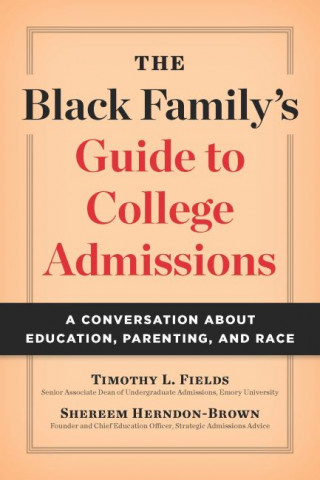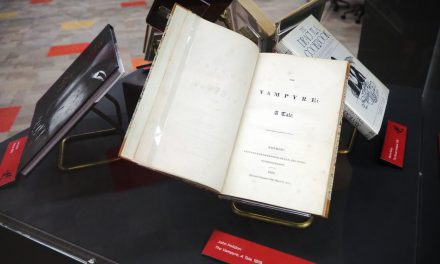Educational conversation as a means to promote individualization — this is the primary purpose of the book, “The Black Family’s Guide to College Admissions,” published on Sept. 6 and written by Senior Associate Dean of Undergraduate Admissions at Emory University Timothy Fields and Shereem Herndon-Brown, the founder and chief education officer of Strategic Admissions Advice, LLC.
Herndon-Brown and Fields said they sought to provide a comprehensive guide to college admissions specifically for Black applicants and their families to combat stereotypes and disparities surrounding the college admissions process.
They were inspired to write the book in summer 2020 during the “racial reckoning movement” galvanized by the murder of George Floyd, Herndon-Brown said. He noted the multitude of Instagram posts by Black students expressing their frustration about inequities in college counseling. Realizing that there was a pressing need for better resources for Black families about college admissions, Herndon-Brown proposed the idea of writing a book to Fields, a colleague of his whom he’d met at a National Association for College Admission Counseling conference in 2013. Fields immediately agreed to be the co-author.
After attending a public high school, Fields studied at Morehouse College (Ga.), a historically Black institution, from 1994 to 1998. He has worked in college admissions for 25 years, first at Morehouse and then at Emory. Fields said these positions have instilled in him a dual appreciation for the cultural benefits of a Historically Black College or University (HBCU) and the resources of a well-financed research university.

“The Black Family’s Guide to College Admissions.” Courtesy of Johns Hopkins University (Md.)
Black students have attained “enormous success” at both HBCUs and predominantly white institutions (PWI), Fields emphasized. One of Fields and Herndon-Brown’s foremost goals in their book is to “redefine success.”
“We have such a rich history of historically black colleges and universities, that for many families, particularly in the South, that is the expectation for families. However, in the ‘50s and ‘60s, Blacks started going to predominantly white institutions. Those are sometimes seen by many to be quote unquote, better than historically black colleges, and universities. What I’ve tried to do is not allow that to be the pervasive sentiment,” Herndon-Brown said.
“We’re not going to say that somebody is going to be more successful if they come to Emory than if they go to Morehouse or another HBCU,” Fields reiterated. “It’s more than just ranking. It’s more than just resources. It really all comes back to work the needs of the student.”
Herndon-Brown is a first generation college student who attended a private high school and obtained his bachelor’s degree from Wesleyan University (Conn.), a PWI, in 1996. He worked as an admissions officer at Georgetown University (D.C.) but has spent most of his professional career working on the high school side of the college admissions process at his business, Strategic Admissions Advice.
Because of their different backgrounds and experiences, Fields and Herndon-Brown said they were able to write a more comprehensive book and better engage with diverse audiences around the country.
Since the release of their book, Fields and Herndon-Brown have traveled to Miami, Chicago, Washington D.C., Los Angeles, Dallas, Houston, New York, Baltimore and Wilmington, Delaware. They also hosted events in Atlanta on Oct. 19 at Emory and the Westminster Schools.
In preparation for the book, Fields and Herndon-Brown sent out surveys and held roundtable discussions with Black families from across the United States. They also met with 15 to 20 college counselors from private and public schools as well as leaders from community-based organizations. Both authors stressed that they wanted the book to be informed by a variety of perspectives.
These meetings were essential because students often learn most of their information about the college admissions process from their families, Herndon-Brown explained.
“If you go to college, you can improve your socioeconomic status,” Herndon-Brown said. “That needs to be informed. It needs to be motivated to be encouraged. And that’s not something that is necessarily inherent in all across all demographics. Right now, for Black families in particular.”
The book is also centered around educating college counselors to better support Black students, Fields added. Since 70% of college counselors are white and 75% are female nationally, sometimes the needs of Black students are not appropriately understood.
“Educators cannot be limited by geography or by HBCU versus PWI,” Fields said. “When you work with students, you have to recognize that there are 4,000 colleges and universities across the country. What schools you suggest to that student should not be just the one you’re familiar with.”
Doreen Okeh (23Ox), one of two co-presidents of the Oxford Black Student Alliance (BSA), said that she had a negative relationship with her college counselor, who she described as “unsupportive” of her choices to apply to highly selective schools. Consequently, Okeh felt like her counselor “didn’t believe in her.”
Though Okeh said she sought to prove the counselor wrong, she said she would have been significantly less stressed throughout the application process if she had a more positive relationship with her counselor.
Jordan Antwi (23Ox), the other co-president of Oxford BSA, said that some of his Black friends felt as though their college counselors made assumptions about their knowledge of financial aid because of their race.
“I think when [counselors] look at a Black student they might think that if they don’t have [the counselor] then they have other resources or their parents,” Antwi said. “But that’s not always true.”
He added that it’s unfair for counselors to make assumptions when not every Black student comes from the same background.
Okeh emphasized that college counselors need to be “mindful of language.”
“I would say to definitely have more caution and empathy towards Black students who want to push themselves and who want to apply for bigger schools,” she said. “Because I did but it wasn’t by her support, and I wish that it was because it would have saved me a lot of trouble and feelings of inadequacy.”
Antwi agreed, noting that college counselors need to improve their understanding of the historical context of Black families in the United States, so they are less inclined to make presumptions about Black students because of racial or class background.
Okeh and Antwi both mentioned how Emory, as a whole, is more diverse than some peer institutions. Okeh, for example, noted how Northeastern University (Mass.), another school she was accepted to, had a 4% population of Black students, while Emory’s undergraduate Black population is 8.5% in fall 2022. For context, the percentage of Black citizens in the U.S. is 13.6%. She said that being able to “cultivate a sense of community” was essential when choosing a college.
“That’s not to say that I’m not gonna make friends outside of my race, but you want to feel a sense of community, and if there’s trouble or there’s discomfort pertaining to racial boundaries, you want a sense of community to fall back on or talk to about your struggles,” Okeh said.
Additionally, Antwi stated how the financial aid he had received from Emory contributed to his decision to attend. Okeh echoed Antwi’s sentiments, acknowledging that though Howard University (D.C.), another HBCU, had initially been one of her first choices, among several factors, she decided not to attend because she didn’t receive enough financial aid.
Herndon-Brown emphasized the individuality that leads students to make different choices about college: “Black is not a monolith.”




